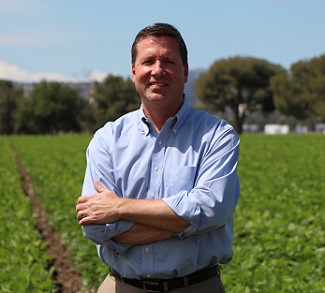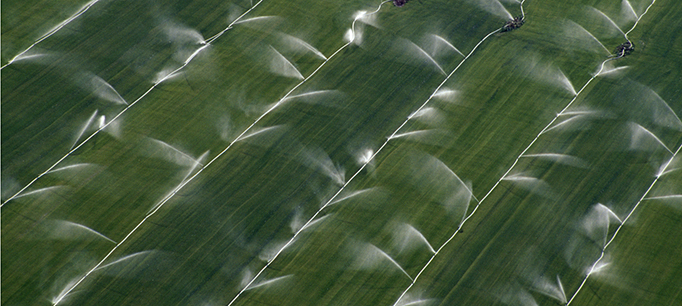California farmers have been coping with major water challenges during the latest drought. We talked with Dave Puglia, executive vice president of Western Growers and a member of the PPIC Water Policy Center advisory council, about these challenges.
 PPIC: What water uncertainties do California farmers face?
PPIC: What water uncertainties do California farmers face?
DAVE PUGLIA: It varies by region. In some areas, water reliability for the future is paramount. In other places, water quality requirements are more challenging. The San Joaquin Valley is facing long-term restrictions in surface water. Imperial County growers are wondering if their supply from the Colorado River will last.
In areas where water quality is key, the increasing capability to detect contaminants has led to increasing regulations to reduce pesticides, herbicides, and fertilizers. The state’s drive for perfection doesn’t recognize the realities of farming. California is treating nitrogen and nitrates as the equivalent of industrial solvents. Nitrogen is necessary to produce food, and we’re using fertilizers much more sparingly now. Many growers worry that there could one day be a virtual prohibition on the use of nitrogen, which has been used from dawn of agriculture.
Businesses hate uncertainty, and state policies on water quality and supply paint a very uncertain picture. These are multigenerational businesses with most of their assets tied up in land. They’re looking over a 20-year horizon and asking, should we continue to invest in this business in this state? They’ve experienced an immense growth in regulatory burdens in the past two decades—not just in water—and don’t see the trajectory changing. From a balance sheet perspective, it looks very dark.
I think we’ve lost regulatory balance in California. If we looked at how all these regulations work together, we could learn a lot about how these mandates add to the burden of this industry. That would force a conversation on whether we want to maintain the nation’s largest agricultural industry.
PPIC: What uncertainties does the state’s groundwater law pose for farmers?
DP: I think the biggest threat to its successful implementation rests in the fact that many growers fear they’ll lose access to adequate groundwater supplies, which won’t be replaced with surface water. In the past 20 years, the San Joaquin Valley has easily lost 2 million acre-feet a year in surface water. The biggest threat is the lack of surface water being delivered to the valley to recharge groundwater basins.
PPIC: What will it take to bridge the “fish vs. farms” divide?
DP: There is a major lack of confidence in the science used by fish agencies to make decisions on water deliveries from the Delta. The state and federal water projects are now functionally controlled by state and federal fish agencies based on the abundance of species, but their modelling seems arbitrary and questionable to many. The fish aren’t recovering, and there’s inadequate attention to other stressors that impact both salmon and smelt. Theoretically, the governor’s tunnels project has potential to break us out of this dynamic and provide adequate water reliability south of the Delta. But there’s uncertainty about it among agencies that would be required to pay for it and opposition from the environmental community. Without some big changes, I don’t see the divide getting better.


